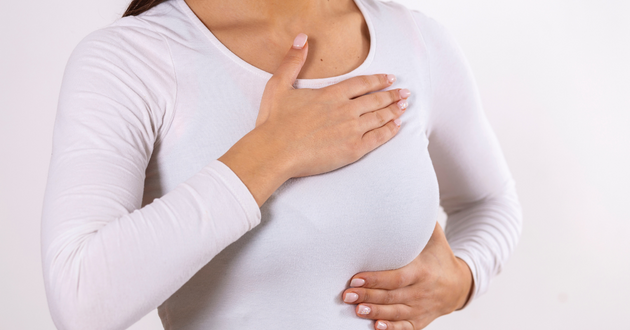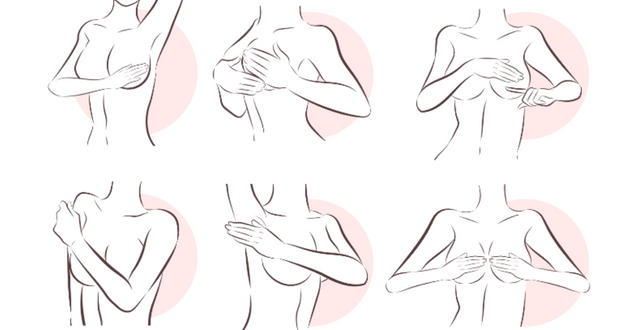It may seem scary, but getting to know our bodies is the best way to monitor any changes and prevent major problems.
Besides a lump, there are other signs to look out for when it comes to breast cancer. If you notice any of these signs, it’s best to see a doctor…
There is no need to panic, but it is good to consult.
Signs and symptoms of breast cancer
– Change in the size or shape of one or both breasts
– A new lump or area that is thicker than the rest of the breast
– Change in the appearance or texture of your skin
– Redness or rash (such as eczema), crusting or itching of the skin on or around the nipple
– A change in the appearance of your nipple or discharge from both nipples
– Chest or armpit pain that remains constant
– A lump or swelling in your armpit or around your collarbone

Guidance on how to check your breasts for breast cancer:
– First, look at the chest and see if you can visually spot anything.
– Raise your arms in the air to check under your armpits as well.
– Then, with your fingers, try to feel and press the breasts, armpits, collarbone and nipples.
– If you get into the habit of doing this regularly, you will quickly learn what is normal for your body and what is not.
– The sooner breast cancer is diagnosed, the greater the probability that the treatment will be successful.

What to do if you find a lump in your breast?
Don’t panic
Most women have lumps around their breasts all the time, and most breast lumps turn out to be benign (not cancer). There are a number of possible causes for noncancerous breast lumps, including normal hormonal changes, a benign breast condition, or injury.
Don’t hesitate to call your doctor if you notice a lump or other change in your breast that is new and concerning
This is especially true for changes that last more than one full menstrual cycle or seem to become larger or more prominent in some way. If you are menstruating, you may want to wait until after your period to see if the lump or other breast change goes away on its own before calling your doctor.
Know what to expect
At the appointment to detect a breast lump, your doctor takes a health history and performs a physical exam of the breast and likely performs breast imaging tests. Ultrasound is often the first or only imaging test used to detect a lump in women who are younger than 30 or are pregnant or breastfeeding.
Both an ultrasound and a mammogram are usually recommended to evaluate a lump in women who are older than 30 and are not pregnant or breastfeeding. If further testing is needed, your doctor may recommend another scan or refer you to a surgeon for a better evaluation.